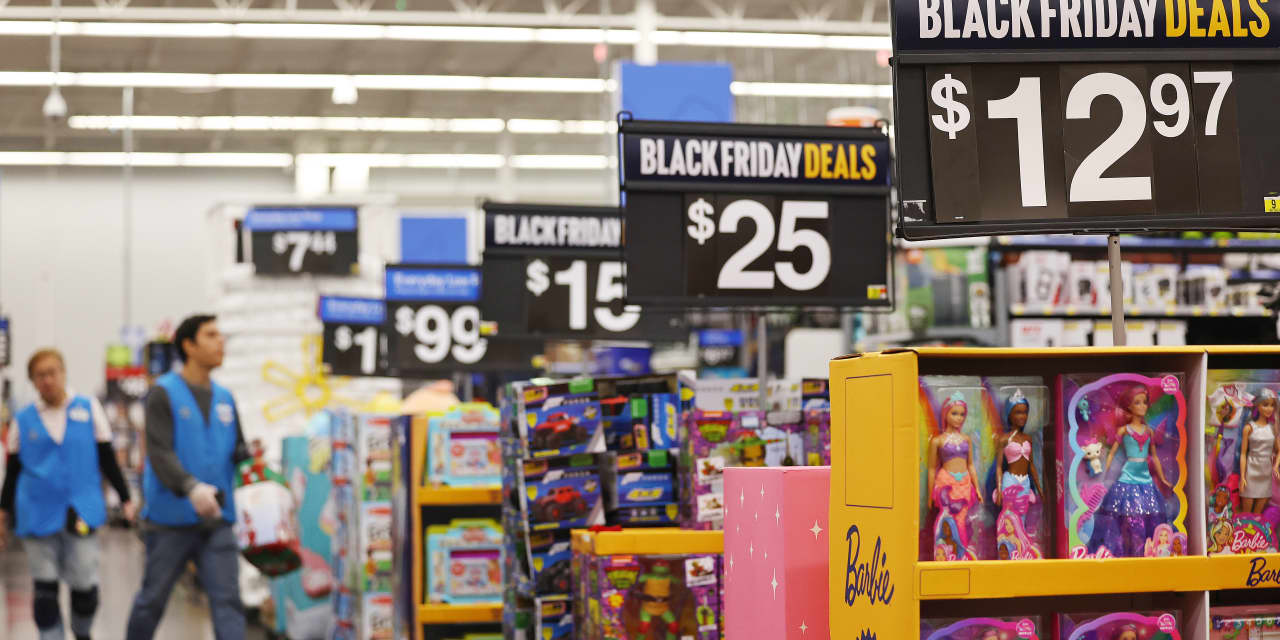This holiday season doesn’t feel like recent pandemic ones, and Black Friday is no exception. It’s beginning to look a lot like prepandemic times.
The post-Thanksgiving sales bonanza has lost its luster in recent years. Pandemic-era supply chain snafus prompted retailers to push up their holiday deals earlier in the year. That gave consumers a head start on their shopping, but it also spread spending out across multiple seasons, diluting the impact of any single day, let alone Black Friday.
This year, retailers offered early deals again. But many Americans have settled back into their prepandemic shopping patterns, meaning they’ve been waiting to shop until now. Black Friday looks to be back in full force.
“We expect shopping patterns will look even more similar to historical holiday periods than they did last year with customers shopping activity concentrated on Black Friday week, Cyber Monday and the last two weeks of December,” said
Best Buy
CEO Corie Barry on an earnings call with investors Tuesday.
Close to three quarters, 74%, of holiday shoppers plan to make a purchase between Thanksgiving and Cyber Monday this year, according to the National Retail Federation, with 72% of shoppers planning to make a purchase on Friday. Perhaps that’s not surprising, given that consumers are facing a host of macroeconomic challenges and are becoming more price sensitive.
“This year, people are looking for deals more than we have seen in previous years,” said Kelly Pedersen, U.S. retail leader at PwC.
They’ll probably find them, experts say, but warn that there won’t be blowout sales like those seen in previous years. The average Black Friday discount this year is 35%, according to a WalletHub analysis of ads from the 13 largest retailers in the U.S. Last year, the average was 37.2% and it was 40.4% in 2019, WalletHub found. A lack of steep markdowns could disappoint consumers.
Retailers, however, have reason to celebrate. Last year, many stores were forced to offer heavy discounts on excess inventory. Those deals took a big bite out of profit margins. Many companies are heading into the holidays with a better inventory position this year.
“Clearance inventory looks controlled heading into the weekend,” wrote Piper Sandler analyst Edward Yruma. “Promotions are largely down [year-over-year], which augurs well for 4Q margin expansion.”
Discounts aside, there are other differences from Black Fridays of yore. Chiefly, the way people will shop has changed.
The days of mall stampedes and parking lot brawls are mostly over. A little over half of consumers—55%—say they want to avoid Black Friday crowds, according to a Deloitte survey, while 58% say that door-buster deals have lost their appeal.
Instead, bargain hunters are going to be scouring the internet for deals. Per Deloitte, 61% of shoppers’ Black Friday budgets will be spent online, up from 59% in 2022.
“It’s a lot easier to go on your laptop or on your phone from your couch on Black Friday than it is to stand outside in the cold,” said Brian Kinsella, senior vice president of product management at Manhattan Associates, a supply-chain solution provider to retailers.
Adobe
expects Cyber Week, the period between Thanksgiving and Cyber Monday, will generate $37.2 billion in online spend this year, up 5.4% year over year.
Overall, however, sales are expected to moderate this holiday season from past pandemic years. The National Retail Federation predicts total holiday sales will grow between 3% and 4% year over year to between $957.3 billion and $966.6 billion. While that’s in-line with the average annual increase over the decade before the pandemic, it marks a deceleration from the spikes in spending over the last two years. And the latest spate of retail earnings showed that sales were slowing down across various retailers, including Best Buy,
Target
(TGT),
Nordstrom
(JWN), and
Kohl’s
(KSS).
“We continue to see a cautious consumer and it remains to be seen how changes in inflation, higher interest rates, and the resumption of student loan repayments will affect discretionary consumer spending during the holiday season,” said Cathy Smith, Nordstrom’s chief financial officer, on a call with investors Tuesday.
Investors may also be tempted to spend Black Friday refreshing their browsers for updates on whether—and how much—consumers are shelling out this season. We understand the urge (and will likely be doing the same). But Citi analyst Paul Lejuez says it’s best not to read too much into the figures.
“Don’t get too worked up over retailers’ performance over Thanksgiving weekend (which represents approximately 10% of 4Q sales),” he wrote in a research note Wednesday. “We believe it is given too much attention. Stay home. Watch some football. Enjoy the time with family and friends. Happy Thanksgiving. Don’t burn the rolls.”
Write to Sabrina Escobar at [email protected]
Read the full article here








